This glimpse of the lives of ten Indians who contributed greatly to statistics can lead the reader on a journey exploring many questions

published 1992 by Wiley Eastern Limited
293 pages
ISBN 9788122404234
If one goes only by what is said on the inside cover, this book is a compilation of autobiographical essays on the scientific lives of ten leading Indian statisticians who emerged from the great statistical movement initiated and guided by Prasanta Chandra Mahalanobis. This is true, but it would be a narrow point of view to take. Instead, reading this book can lead the reader on a journey exploring many questions: What made Mahalanobis launch this movement on statistics? Having come from a physics background, how did he build a research group in (mainly) statistics? How did he develop a close friendship with so many scientists and persuade them to spend long periods of time at the Indian Statistical Institute (ISI), which he founded in 1931? Mahalanobis also founded the journal Sankhyā in 1933 and the National Sample Survey Office in 1950. How did he do all these? The year 2018 being the 125th birth anniversary year of Mahalanobis, it may be appropriate to reflect on some of these questions. (Also see [1].)
The preface of this volume talks about statistical thinking in ancient times, the recent past and the post-independence period in India. This is very informative. Nevertheless, in the early 1900s, statistics was a young discipline and was not quite a scientific and academic discipline in its own right—even in the Western world, and certainly not in India. Mahalanobis, having been introduced to the subject of statistics by his tutor, the Nobel Prize-winning physicist C.T.R. Wilson, through some articles in the journal Biometrika when he was about to leave England for India in 1915, turned his attention increasingly to statistics. This is because he realized that statistical theory and practice were essential for the development of India even though his expertise at that time was in physics.

When Mahalanobis founded ISI, it was the first institute of its kind anywhere in the world devoted mainly to the study of statistics. He visualised statistics as a technology applicable in diverse fields of the natural and social sciences and believed that statistics could grow well only in an environment where active quantitative research in its various domains of application went on side by side with research in statistical theory and methodology. He also believed in active day-to-day collaboration between statisticians and these other scientists. Thus, he established research units in many areas of the natural and social sciences within the Institute. It continues to function in the same spirit even today, making contributions not only to the discipline of statistics, but to many other areas where statistics is applied. When training courses in statistics were begun in the Institute in the 1950s and formal degree programmes were initiated in 1960, the same philosophy continued to guide the course structures and teaching methods—theory and methodology going hand-in-hand with real-life applications.
The ISI was the first institute of its kind anywhere in the world devoted mainly to the study of statistics
ISI was not the only organization that Mahalanobis started. He also established the National Sample Survey Office (NSSO) in 1950 as an organization for collecting socio-economic data on a continuing basis on the principles of scientific sampling methods. The technical part of the work was the responsibility of the Institute and the data collection that of the Government of India. It not only contributed data essential for the socio-economic development of the country, but also made fundamental contributions to survey methodology, Mahalanobis himself (and his proteges like D. Lahiri, K.R. Nair and J.M. Sengupta) contributing many key ideas. Later in 1970, the NSSO was completely taken over by the government. The idea of an organisation like the NSSO, meant for regular and continuous surveys based on scientific methodology, was a very novel idea, unique in the world. Later, many countries established organizations somewhat similar to the NSSO. The Central Statistics Office (CSO), meanwhile, coordinates the statistical activities in the country and evolves statistical standards.
The Indian Science Congress gave limited recognition to statistics as a discipline in 1942, when it accepted statistics as a part of the Mathematics section. In 1945 though, statistics was recognised as a separate discipline—this change in its perception surely due to the exalted status to which Mahalanobis had raised the discipline of statistics. No wonder then that Mahalanobis was elected the first president of the Statistics section. His presidential address to the section entitled “Why Statistics?” [2] makes good reading even today. Mahalanobis also contributed to economic planning in India, being given the task of preparing a draft of the second five-year plan in 1955.
Some of the contributors to Glimpses have described some aspects of their research, whereas others have discussed in detail how they reached ISI and what happened next. While doing so, they have touched upon these important contributions of Mahalanobis to the Indian statistical system. K.R. Nair describes how the CSO was created under the leadership of Mahalanobis and how it grew. Mahalanobis wanted world-class scientists like Nair and Lahiri to head CSO and NSSO, so that India got a first-rate statistical system. This was necessary to provide reliable and credible data on India’s socio-economic variables for the purposes of planning and development. (Details on this may be found in [3] and [4].) Despite the constitution of a National Statistical Commission and so on in recent years (see [5] for details), our statistical system, ridden with bureaucracy, has suffered from credibility issues.
One must remember that such was the stature of Sankhyā, for instance, that greats like the Russian probabilist Andrey Kolmogorov published papers in it. Kolmogorov visited ISI in 1962. In one of the discussions with him, Mahalanobis posed to him the problem of how to decide if a sample (which is just a string of numbers) drawn from a population is random. Kolmogorov then started working on what is now called Kolmogorov complexity (or algorithmic complexity) and his first paper on this subject was published in Sankhyā. J.K. Ghosh once hinted to me that Mahalanobis expected him to work with Kolmogorov on this theme, but it did not happen.
Bahadur
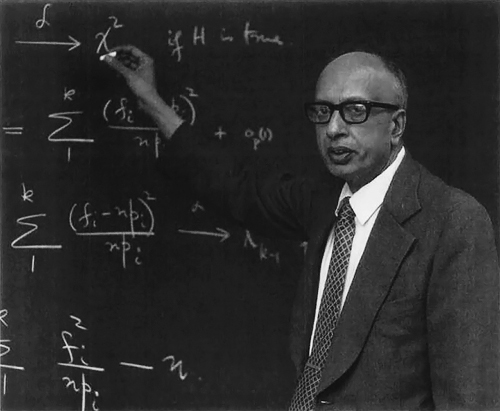
Raghu Raj Bahadur‘s essay in this volume shows how deep fundamental issues can be dealt with, illustrating it with the notion of transitivity of sufficiency in sequential analysis. He does not mention any of his famous findings: Bahadur efficiency, Anderson–Bahadur algorithm or Bahadur–Ghosh–Kiefer representation. He (along with Ranga Rao) had realized the importance of the theory of “large deviations” in his work on Bahadur efficiency a long time before it assumed significance in many other fields. (S.R.S Varadhan has subsequently contributed substantially to this field, and its importance to fields such as mathematical physics is well understood now.) Bahadur, who passed away in 1997, may easily be described as an early architect of mathematical statistics.
Bahadur was an early architect of mathematical statistics
Bahadur received his Ph.D. from the University of North Carolina, Chapel Hill under the guidance of Herbert Robbins in 1950, after which he joined the University of Chicago. He then served as a Professor at ISI Calcutta from 1956 to 1961 during which time he was an inspiration to a very large group of researchers in probability and mathematical statistics. In 1961 he left ISI to return to the University of Chicago where he spent the remainder of his academic career.
Kallianpur, Masani and Wiener’s Influence
Gopinath Kallianpur, like Bahadur, completed his Ph.D. under the guidance of Herbert Robbins, and then spent a year at the Institute of Advanced Study, Princeton. He was eager to return to India, and went to see Mahalanobis in New York when he was there. Kallianpur credits Robbins’ presence during this interview for the job offer at ISI that Mahalanobis made on the spot. At ISI, Kallianpur worked on various problems in statistics (some in collaboration with C.R. Rao) before moving to mathematical research in probability theory. One of those problems involved optimality of Bayes estimators, at a time when Bayesian statistics was not popular at all.
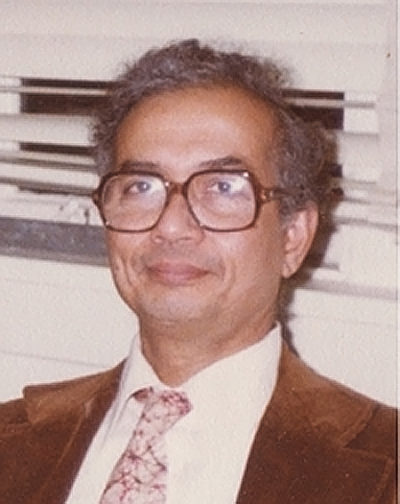
Due to Kallianpur’s efforts the Bengaluru campus of ISI was established
During Norbert Wiener’s visit to ISI in 1955–56, Kallianpur received training from him in the field of prediction theory for which he expresses his “profound scientific debt” (and affection) to Wiener. But Kallianpur could not collaborate with Wiener during this visit, unlike P.R. Masani (who worked with Wiener later too). So Wiener managed to secure a two-year leave for Kallianpur from ISI to facilitate a long-term collaboration between them in the area of nonlinear prediction theory. However, this project did not materialize as Kallianpur suffered a prolonged illness soon after reaching the US. Nevertheless, he notes that, even though his work on nonlinear filtering theory (for which he is well known) began as a collaboration with C. Striebel at the University of Minnesota, motivation for it came from Wiener—specifically, Wiener’s visit to ISI, and to Indiana University where Kallianpur and Masani (also Eberhard Hopf, of Hopf bifurcations fame) were teaching. Kallianpur later returned to ISI to become its first Director in 1976 under its new Memorandum of Association. It was due to his efforts that the Bengaluru campus of the Institute was established.
When I joined ISI as a B.Stat. student (in 1977), he was the Director of the Institute, but I had no idea that this distinguished-looking person was born and brought up near Mangaluru. Much later, when Kallianpur visited ISI Bengaluru (probably his last visit to India), I had a conversation with him in Kannada and Tulu. He then mentioned that, during his younger days, he had a very close association with the Jnanpith award winner Kota Shivarama Karanth and his family. Recently, the conservationist Ullas Karanth, son of Shivarama Karanth, confirmed this—referring to Kallianpur affectionately as Gopi-anna (elder brother)—when we had a break from some discussion in statistical ecology.1 Kallianpur resigned from the directorship of ISI in 1978 and returned to the US, to the University of North Carolina, Chapel Hill, where he continued to work vigorously in probability theory. He has collaborated extensively in the field of filtering theory with R.L. Karandikar. (Karandikar, currently the Director of the Chennai Mathematical Institute, was an M.Stat. student when Kallianpur was the Director of ISI, and later got his Ph.D. from ISI.) Kallianpur retired in 2001, and passed away in 2015.

Pesi Rustom Masani (not to be confused with Sir Rustom P. Masani, a historian) worked in the highly theoretical and mathematical area of probabilistic functional analysis at the Institute of Sciences, Bombay, after his Ph.D. from Harvard. He was professor and head of the department of mathematics there during 1949–59. During a six-week period in 1953–54, he was able to interact with Wiener who had come to India on a visit. In 1955–56, when Wiener accepted an invitation to visit ISI, Mahalanobis went to the extent of inviting Masani to ISI so that he could continue his collaboration with Wiener. (Wiener had friends and collaborators at many places. J.B.S. Haldane was one of his friends too.) This collaboration continued and was extremely productive. I am not competent enough to comment on Masani’s work in mathematics, except for noting that this collaboration eventually led to the solution of some important problems in prediction theory and multivariate stochastic processes.
From Masani’s beautiful biography of Wiener [6] one can see that Wiener had a deep influence on Masani. This biography not only depicts Wiener the mathematician, but also describes his personality to some extent, detailing his interests in many other fields such as cybernetics, economics and also the philosophy of religion. Cybernetics, an interscientific discipline concerned with “communication and control in the animal and the machine” (as defined by Wiener) interested Masani, and he published papers in this area. Both Wiener and Masani had a much broader perspective on cybernetics which even included the philosophy of scientific methodology, rather than the narrow approach of machine learning which many take it to be.
Wiener had a deep influence on Masani
When Masani was at the Institute of Sciences, Bombay, he inspired and influenced people like Ashok Maitra to study mathematics. (Ashok Maitra joined ISI much later as a faculty member and contributed substantially with his research work and also by guiding a number of research students. He was the Director of ISI during 1984–87.) Another person who came under the influence of Masani was Kantilal Mardia, who is now famous for his work in shape analysis. Masani offered Mardia a teaching job at the Institute of Sciences after he finished his M.Sc. in statistics at the University of Bombay, but he couldn’t persuade Mardia to work in measure theoretic probability. In 1959, Masani left for the US, working first at Indiana University and then the University of Pittsburgh. Masani was a scholar not only in mathematics and cybernetics, but also in the teachings of various religions. He passed away in 1999.
Lahiri and Nair’s Struggles Against the Odds
Essays by Debabrata Lahiri and K.R. Nair describe the very difficult beginnings that they had. This should provide inspiration to young students to fight all odds to realize their dreams.

Lahiri was born in Rangoon, Burma (now Myanmar), where he got his initial education under severe financial difficulties. After his B.Sc. there, he came to Calcutta for an M.Sc. in mathematics. Once again, financial support was unavailable, and he could only manage with great strain. Returning to Rangoon after receiving his M.Sc. degree, he found some small positions. However, Japanese occupation of Burma during the Second World War forced his family to migrate to India.
Lahiri contributed a great deal to ISI in return for what he received
After trying his hand at various tasks, he eventually joined ISI in 1946. Mahalanobis showed a great deal of affection to the young researcher, and in return Lahiri contributed a great deal to the theory of sampling, with results such as probability proportional to size (PPS) sampling. Lahiri went on to become a world-famous figure in the theory of sampling. At the same time, he maintained his interest in number theory. This aroused R.C. Bose’s interest in his work, who encouraged him to publish his results. Lahiri narrates with sadness how his first attempt at publication was a disaster:
I never received a reprint, a cyclostyled paper was sent to me—‘Lahiri’s Theorem’ was nowhere to be found, and authorship went to four persons with my name coming last…
Lahiri contributed a great deal to ISI in return for what he received. He retired as Director of the Research and Training School (RTS) of ISI. (RTS does not exist anymore; it has been absorbed into ISI.) He managed this work along with his heavy responsibilities in the NSSO, which had been set up as a separate wing of ISI for survey work under Lahiri’s headship.
Kesavan Raghavan Nair had a strong desire to succeed as a statistician, but had to depend on help from many people before reaching University of Madras for research. First, when it looked like he would not be able to go to college after his high school due to financial difficulties, one of his cousins came to his aid. Then, after he finished his B.A., he found no job, not even as a school teacher. A little later, he joined a friend of his in Madras for job hunting. Another friend, a doctor, helped him by getting him to privately tutor in mathematics, the son of one his rich patients! Later, a position with a tutorial college materialized, but at a very low salary. It is remarkable that he narrates this ordeal without any resentment—in fact, with some humour at times. For instance, Nair proudly mentions that the principal of this Minerva Tutorial College chose the motto suggested by him for the college (which catered mainly to failed students) which ran as: “Under Minerva’s roof you are failure proof!”
During this time he came to know about the University Research Scholarship in statistics—a single seat at the University of Madras—which he obtained on a second attempt. His real success, however, came about when he could read papers in statistics journals such as Biometrika and Journal of the Royal Statistical Society and formulate problems for his own research. Soon he was able to publish in Biometrika and Sankhyā. This made Mahalanobis, who was the founder-editor of Sankhyā, aware of the talented Nair.
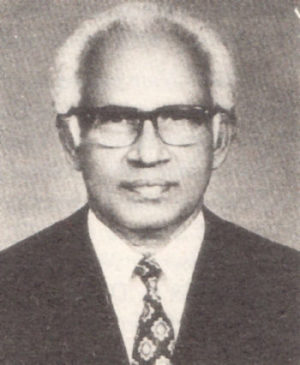
After the end of his scholarship at Madras, Nair decided to go to Calcutta and try and join the Statistical Laboratory of Mahalanobis. This worked out and Mahalanobis admitted Nair to the Laboratory as a research worker. When Calcutta University started a postgraduate degree in statistics in 1941, Nair was appointed as a part-time lecturer, along with R.C. Bose and S.N. Roy as full-time lecturers. What is interesting to note is that C.R. Rao was one of the students in the first batch of this programme. Nair had a very fruitful collaboration with Rao and Bose during his ISI days. He published many papers (some of which were jointly with either Bose or Rao) in the theory of design of experiments including orthogonal arrays, factorial experiments and incomplete block designs.
Since his position at ISI was financially inadequate to support his family, he joined, on Mahalanobis’s advice and recommendation, the Department of Food, Government of India in 1944 as Assistant Director of Statistics. However, he was still interested in research, and after the end of WWII in 1945, he was able to get a scholarship to study at the University College, London for his Ph.D. He received his doctoral degree in 1947, but he had already been elected a Fellow of the Royal Statistical Society in 1946! As soon as he received his Ph.D. he was asked to return to India and appear for an interview before P.V. Sukhatme for the position of statistician in the Forest Research Institute (FRI), Dehradun. Here, Nair began applying modern statistical methods to forestry research. He notes that J.N.K. Rao and K.R. Shah came from the University of Bombay to work under him after their M.Sc. in statistics. Both of them are famous statisticians now, residing in Canada.
Mahalanobis, however, wanted Nair to play a big role at CSO rather than working at a smaller place like FRI. Accordingly, in 1959, Nair left FRI and joined CSO as Joint Director. He continued his research at CSO, but there was much less time available for it due to the inherent responsibilities. After he retired as the Director of CSO in 1968, he worked at the United Nations Economic Commission for Asia and the Far East (ECAFE) (now the Economic and Social Commission for Asia and the Pacific, ESCAP), Bangkok and the Asian Statistical Institute, Tokyo until 1975. He later settled down in Bengaluru, where he passed away in 1993.
C.R. Rao
Calyampudi Radhakrishna Rao describes how he ended up at ISI by pure chance—statistics as a last resort, as he calls it. One must wonder what would have happened to statistical theory and practice in India (if not in the whole world) if this pure chance occurrence were to not happen. Rao was born in Huvvina Hadagalli, which is now in Karnataka. He mentions that his performance in school and college was uniformly excellent. However, after his M.A. degree from Andhra University, he was desperately looking for a job. A call for interview from the Geological Survey of India took him to Calcutta. Even though he did not succeed in the interview, he came to know about ISI from a complete stranger who took him to the Presidency College where the Institute was then located. Rao then wrote to Mahalanobis requesting admission to the Institute, which was granted immediately. When Calcutta University started the postgraduate course in statistics, he joined its first batch.
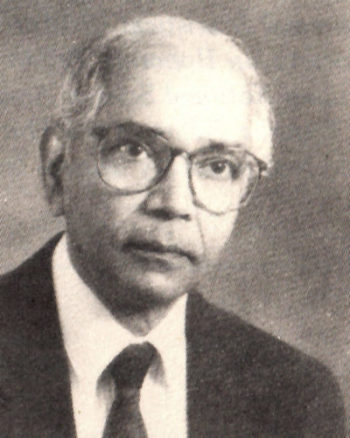
Rao discovered the famous “Cramer–Rao inequality on the lower bound on the variance of any estimate” soon after finishing his M.A. in statistics, when he had started teaching at ISI. Some time later, he discovered the Rao–Blackwell Theorem too. This (loosely speaking) says that any estimator can be improved upon by conditionally averaging with respect to a sufficient statistic. Both these results were independently obtained, not by collaboration; Cramer and Blackwell also discovered these respective results at about the same time. (Rao mentions in his essay that, on other occasions, due credit was not given to him for his work.) In 1946, Mahalanobis sent Rao to Cambridge University to apply “Mahalanobis distance”-based analysis on some anthropometric data. Not only did he complete this analysis, but he also managed to write a Ph.D. thesis under R.A. Fisher. He also did joint work with K.R. Nair who had gone to University College, London to pursue his Ph.D.
C.R. Rao ended up at ISI by pure chance—statistics as a last resort, as he calls it
When Rao returned to ISI in 1948, he was tasked with organizing research and training activities under RTS, since Mahalanobis had become busy with national planning. The list of people who received their doctorates with Rao from this period is impressive: D. Basu, V.S. Varadarajan, K.R. Parthasarathy, S.R.S. Varadhan, Des Raj, U.S.R. Murthy, D.C. Rao, R. Chakraborti and many more. His efforts helped ISI become an Institute of National Importance in 1959. The introduction of B.Stat., M.Stat. and Ph.D. programmes at ISI were also due to his efforts. Rao served as the Head of RTS at ISI from 1949 to 1963, guiding it to great heights in the areas of statistics, mathematics and economics. In 1963 he was appointed the Director of RTS, and in 1972 when Mahalanobis died, Rao became the Director of ISI. After a new “constitution” was adopted by ISI, Rao did not want to continue with the administrative responsibilities, and Kallianpur was invited to join ISI as its new Director. After his retirement from ISI in 1979, Rao has continued with his research at various universities in the US.
He has been honoured with many awards. Most prestigious among them are the Guy Gold Medal of the Royal Statistical Society (2011), National Medal of Science (US, 2002), Wilks Memorial Award (1989), Fellow of the Royal Society (1967) and the Padma Vibhushan (2001). His book, Linear Statistical Inference and its Applications (1965) is a classic. (Many more details on C.R. Rao and his achievements may be found in [7].)
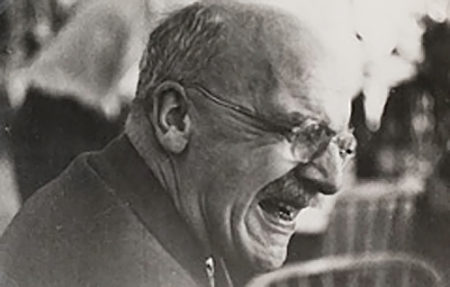
Haldane helped ISI develop expertise in biometrics and encouraged palaeontological research in India
In connection with ISI, Mahalanobis and Rao, one scientist must be specially mentioned—J.B.S. Haldane. On Mahalanobis’ invitation, he joined ISI as a research professor and stayed there during 1957–61. Haldane helped Rao with the curriculum of the B.Stat. course which included, in addition to statistics and mathematics, natural and social sciences. He also agreed to be in charge of teaching biological sciences in this programme. Haldane helped ISI develop expertise in biometrics. He also encouraged palaeontological research in India. This must have played a role in the discovery of the first Jurassic mammal from India (by an Indian geologist), which was named Kototherium haldanei. (This dinosaur lived about 160 million years ago and is an evidence in favour of the present-day view of how the subcontinent was formed as a result of continental drift.) In spite of all this, the association between Mahalanobis and Haldane did not last very long, and Haldane resigned from ISI due to disagreements with Mahalanobis’ policies. He moved to Bhubaneswar to start his own Genetics and Biometry Laboratory. By then he had become not only an Indian citizen but fully an Indian. He remained in Bhubaneshwar till his death from cancer in 1964.
Shrikhande

After his B.Sc. in mathematics at the Government College of Science, Nagpur, Sharadchandra Shankar Shrikhande was desperate for a job. This eventually brought him to ISI which was still located at the Presidency College. After a year, he left and a little later he got a lecturer’s position in Nagpur. A few years later he was able to join the Department of Mathematical Statistics at the University of North Carolina, Chapel Hill, for higher studies, with the help of funds from the Government of India. Shrikhande recalls that the senior research students there included Bahadur and Kallianpur. R.C. Bose took him as a Ph.D. student, which led to a remarkable thesis on combinatorial designs. After his Ph.D., he returned to Nagpur and worked there for some time during which he held brief visiting positions at the University of Kansas and the University of North Carolina, Chapel Hill.
He is famously known for his joint work disproving Euler’s conjecture
He was a Professor of Statistics at the Banaras Hindu University during 1960–69. In 1969 he became Director of the newly created Centre for Advanced Study in Mathematics at the University of Bombay, and retired in 1978. He is most famously known for his work jointly with E.T. Parker and R.C. Bose disproving Euler’s conjecture on the non-existence of two mutually orthogonal Latin squares of order 4n +2 for every n\geq 1.
Sukhatme and Huzurbazar, the Statisticians Outside ISI
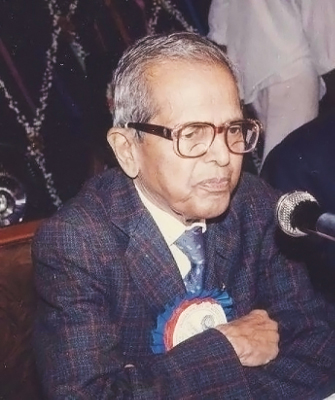
It should be mentioned that there were statisticians who worked independently of Mahalanobis and contributed to statistical practice in India as early as the 1940s. Pandurang Vasudeo Sukhatme, after his Ph.D. and D.Sc. (under R.A. Fisher, E. Pearson and J. Neyman) from University College, London, worked as a statistician, and later as a statistical advisor, at the Indian Council for Agricultural Research, contributing extensively to agricultural statistics during 1940–52. There was disagreement between Mahalanobis and Sukhatme on how statistics should be employed in areas like agriculture. Even so, they had great respect for each other and contributed to the theory of sampling and its application to agriculture.
During 1952–70, Sukhatme headed the Statistics Division at the United Nations Food and Agriculture Organization (FAO). He started devoting more of his efforts at this time to the measurement of malnutrition and poverty in the world. As he explains it: If X and Y are random variables that denote, respectively, the food intake and the requirement of an individual then the incidence of undernutrition can be measured by \int\,\int_{x < y} f(x,y)\,dx\,dy, where f(x,y) denotes the joint probability density of (X,Y). However, suitable data to estimate this were not available. Sukhatme derived an approximate formula, on the basis of which he estimated that 20% of the world population went hungry. This was quite different from what experts at FAO believed then. Fortunately, this matter was referred to the Royal Statistical Society and the Nutritional Society of Great Britain for resolution, where Sukhatme’s findings prevailed. Moving on, he became an experimental nutritionist (and a biochemist, to a lesser extent). He came in touch with Sheldon Margen, a pioneer in nutritional science, at the University of California, Berkeley and formulated the famous Sukhatme–Margen hypothesis. Quoting from the volume, it says: “At lower levels of calorie intake, energy is used with greater metabolic efficiency and this efficiency decreases as the intake increases over the applicable range.”
For his work on nutrition, Sukhatme received the Guy Silver Medal of the Royal Statistical Society in 1963. Sukhatme was conferred the Padma Bhushan in 1973; he died in 1997. In his essay, Sukhatme does not mention his short association with ISI in 1936 (which at the time was actually the Statistical Laboratory in Presidency College) after his return, with a Ph.D., from London. Mahalanobis had given him various facilities at the Laboratory including a small monthly stipend so that he could conduct his independent research (towards his D.Sc., probably). It is surprising that Sukhatme does not refer to this and one finds it in Nair’s essay instead. On the other hand, perhaps, it is not surprising since there was a fallout between him and Mahalanobis soon afterwards. Sukhatme did, however, visit ISI once much later to give the convocation address in 1979 when I was a B.Stat. student.
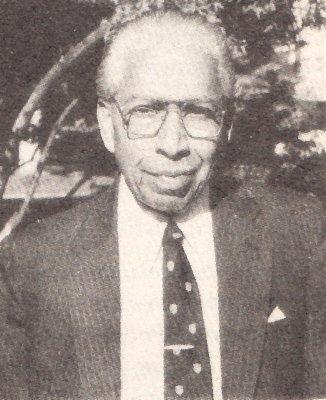
Vasant Shankar Huzurbazar is the only one among the ten statisticians that contributed to this book who never worked at ISI. He was influenced, even if perhaps remotely, by Mahalanobis’s address to the Indian Science Congress in 1945. Huzurbazar was the only research student of Sir Harold Jeffreys (a very famous Bayesian) in the field of Bayesian statistics, and the very first Ph.D. in the same field. After his Ph.D. from Cambridge, Huzurbazar contributed to the area of mathematical statistics, working at the University of Poona during 1953–76. After retiring in 1979, he joined the University of Colorado, Denver and continued his research until his death in 1991. Jeffreys, who was very impressed by Huzurbazar’s contributions, extensively references Huzurbazar’s discoverie—he called one of them “Huzurbazar’s invariants”—in his book, Theory of Probability (which is a must-read for any student of Bayesian statistics).
Basu
Although the essays are interesting to read, some of them require a good bit of work even for people who know the technical material. Debabrata Basu‘s essay takes us through some examples and counter-examples hinting at how he eventually became a Bayesian. For the complete story on this conversion one should look elsewhere. For example, the book Statistical Information and Likelihood – A Collection of Critical Essays by Dr. D. Basu, (published by Springer-Verlag, 1988, and edited by J.K. Ghosh, one of the editors of Glimpses) tells us about his complete transformation from a frequentist statistician into a subjective Bayesian. I cannot resist myself from quoting the following from the Foreword, by Richard Barlow, of this volume:
I spent the 1975–76 academic year at Florida State University in Tallahassee. My purpose was to complete a book on Statistical Reliability Theory with Frank Proschan,…,I started attending lectures by Dev Basu on statistical inference. It was Lehmann’s hypothesis testing course and Lehmann’s book was the text. However, I noticed something strange — Basu never opened the book. He was obviously not following it. Instead, he was giving a very elegant, measure theoretic treatment of the concepts of sufficiency, ancillarity, and invariance. He was interested in the concept of information — what it meant, how it fitted in with contemporary statistics. As he looked at the fundamental ideas, the logic behind their use seemed to evaporate. I was shocked. I didn’t like priors. I didn’t like Bayesian statistics. But after the smoke cleared, that was all that was left.
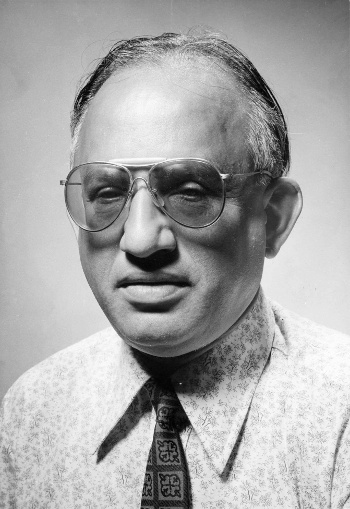
There you have it from a well-known statistician like Richard Barlow, if you don’t want to believe me because I am a Bayesian and a big fan of Basu: A student of mathematics reads up classical statistical theory and becomes a frequentist (Neyman–Pearsonian) statistician for a while. Upon critically examining that statistical framework, however, he ends up with the firm belief that the Bayesian approach is the only correct approach! It should be mentioned that Basu first became familiar with Bayesian ideas quite early on in his days at ISI when he started reading the work of Abraham Wald, who was an authority in mathematical statistics. (C.R. Rao had asked Basu to be ready for a visit to ISI by Wald.) However, the Bayesian elements in Wald’s work were for showing optimality of statistical procedures, and not for advocating the Bayesian approach itself. This highlights another talent of Basu—he was such a good teacher that he could unravel very difficult and deep concepts effortlessly. Basu died in 2001.
R.C. Bose and S.N. Roy were integral part of ISI during its early days. They derived the sampling distribution of the Mahalanobis D^2 in the non-central studentised case, a famous result. (Let us note in this context that Mahalanobis relied a lot on his statistical intuition for his ideas without worrying about their mathematical developments. For example, Karl Pearson had initially expressed reservations regarding the use of Mahalanobis D^2 in preference to his own coefficient and the paper was not accepted for publication in Biometrika, even though it is considered a great discovery now. Isn’t it interesting then that Mahalanobis was brought to statistics by Pearson’s papers in Biometrika? For details on this one may read [8].) However, both Bose and Roy migrated to the US and continued their research there. Bose is best known for his work in design theory, finite geometry and the theory of error-correcting codes, BCH (Bose–Chaudhuri–Hocquenghem) codes being one of his collaborative inventions. Roy worked mainly on multivariate statistical analysis.
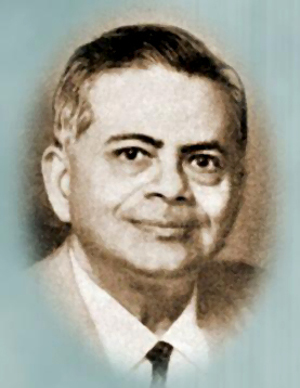
Bose, Roy and C.R. Rao all received their M.A. degrees from Calcutta University, which has the distinction of starting the very first M.Sc. course in statistics in India. Other well-known statisticians it has produced are M.N. Ghosh, H.K. Nandi and J.K. Ghosh. Calcutta University, apart from playing a crucial role in the birth of ISI, also contributed to research in statistics independently. In fact, Mahalanobis and his colleagues started the Statistical Laboratory in the Physics Department of Presidency College, and ISI too was operating from that location until as late as the 1950s. (In later years, Mahalanobis was able to develop the Institute to its present eminence, due to his proximity to Nehru and his involvement in national planning.)
There have been important contributions to statistics in India from other universities too. M.C. Chakraborti (with A.M. Kshirsagar) developed a strong statistics department at the University of Bombay where statisticians such as Kantilal Mardia, C.G. Khatri, K.R. Shah, J.N.K. Rao and G.S. Maddala studied for their M.Sc.
Finally, one must acknowledge the great effort that the editors of this volume—J.K. Ghosh, S.K. Mitra and K.R. Parthasarathy—have put in to produce the final product. They are very well-known statisticians and probabilists who have had long careers at ISI. Like Basu, Jayanta Kumar Ghosh started out as a mathematical statistician and gradually transformed into a Bayesian. So it is not surprising that his initial research contributions included a characterization of the minimal sufficiency partition for discrete models in collaboration with Basu, and the famous “Bahadur–Ghosh–Kiefer representation”. He was the Director of ISI during 1987–92, when he strived to rebuild its strength, part of which had been lost due to the departure of many scientists to foreign institutions.
As Director of ISI, J.K. Ghosh strived to rebuild its strength
After this directorship at ISI, he joined Purdue University as a professor in statistics, where he formed a very successful research group. Here alone he guided the Ph.D. theses of about twenty students! He was a very kind-hearted person who went out of his way to help students and fellow researchers. Personally, I am deeply indebted to him for the support that I have received over many years. Unfortunately, his health started deteriorating a few years ago and he passed away on 30 September 2017. Among the many awards and recognitions that he received are the Padma Shri (2014), National Professorship (India) and Presidentship of the International Statistical Institute (1993).
Sujit Kumar Mitra, who passed away in 2004, did a lot of collaborative research with C.R. Rao. His work in the area of matrix theory and linear models is well known. Kalyanapuram Rangachari Parthasarathy is a famous probabilist who is now a well-known name in quantum probability, and ISI owes much to him for the leadership that he has shown in building the research group in probability theory there. Initially, the group consisted of research students including Varadarajan, Ranga Rao and Parthasarathy,
later joined by Varadhan. As a faculty member, Bahadur was available for some consultation, but most of the work was done through the discussions between these young Ph.D. students.
Ranga Rao, Varadarajan, Varadhan and KRP inspired each other in their work. It is thus very appropriate that KRP is one of the editors of Glimpses, a volume in which one will find an opportunity to have a “glimpse” of the lives of ten Indians who contributed greatly to statistics. No student or teacher of statistics should miss this great opportunity.
further reading The article “About Statistics as a Discipline in India” by B.L.S. Prakasa Rao in Electronic Journal for History of Probability and Statistics, Vol. 2, December 2006 gives some details on some of the topics covered in this volume whereas the article, “Evolution of Statistics in India” by J.K. Ghosh, P. Maiti, T.J. Rao and B.K. Sinha in International Statistical Review / Revue Internationale de Statistique, Vol. 67, April 1999 provides a comprehensive discussion.
References
- [1] Anil K. Bera and Chang Lu. Prasanta Chandra Mahalanobis: A Renaissance Man and the Father of Statistics in India. Bhāvanā. 1(3): 17–25
- [2] P.C. Mahalanobis. Why Statistics?. Sankhyā. Sep. 1950. 10(3): 195–228
- [3] T.J. Rao. Mahalanobis’ Contributions to Sample Surveys. Resonance. June 1999: 27–33
- [4] D.B. Lahiri. Multi-Subject Sample Survey System: Some Thoughts Based on Indian Experience. In Contributions to Statistics. pp. 175–220. Pergamon Press. 1963. (This is a volume edited by C.R. Rao and presented to Mahalanobis on the occasion of his 70th birthday.)
- [5] T.J. Rao. National Statistical Commission and Indian Official Statistics. Resonance. Dec. 2013: 1062–1072
- [6] P.R. Masani. Norbert Wiener 1894–1964. Birkhäuser Verlag, 1990. Masani also edited the collected works of Wiener: P.R. Masani. Norbert Wiener: Collected Works. 5 vols. MIT Press, 1976–1985.
- [7] B.L.S. Prakasa Rao. C.R. Rao: A Life in Statistics. Current Science. 10 Sep. 2014. 107(5): 895–901
- [8] J.K. Ghosh. Mahalanobis and the Art and Science of Statistics: The Early Days. Ind. Jour. of History and Science. 1994. 29(1): 89–98
Footnotes
- Ullas added the following recently: “Gopinath Kallianpur’s father, Kallianpur Bhavanishankar Rao, was headmaster of Board High School, Puttur (a small town near Mangaluru) in the 1950s. His father and his step-mother Sathyavathi and my parents were close family friends. They used to visit Balavana (Shivarama Karanth’s house in Puttur) when I was a boy, even before I joined the same High school in 1958 after Mr. Rao had retired. Gopinath Kallianpur had moved out of Puttur but used to visit us at Balavana with his wife Krishna when he visited the town. He was very close to my parents, who were very helpful when his father died later.”. ↩
